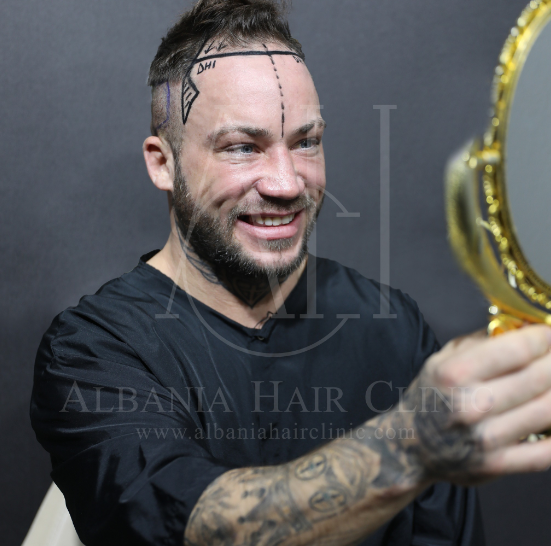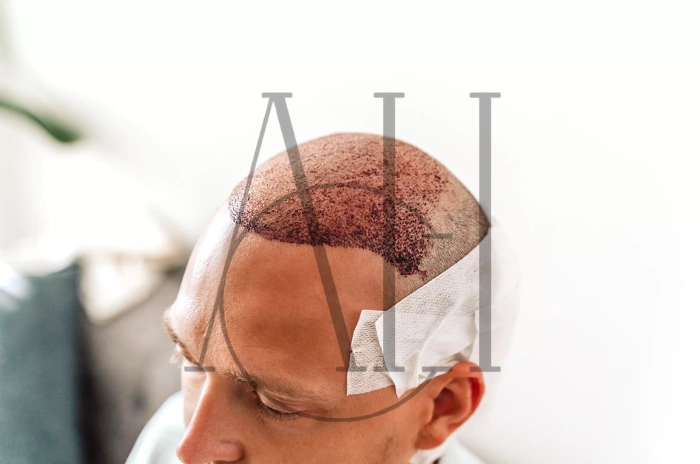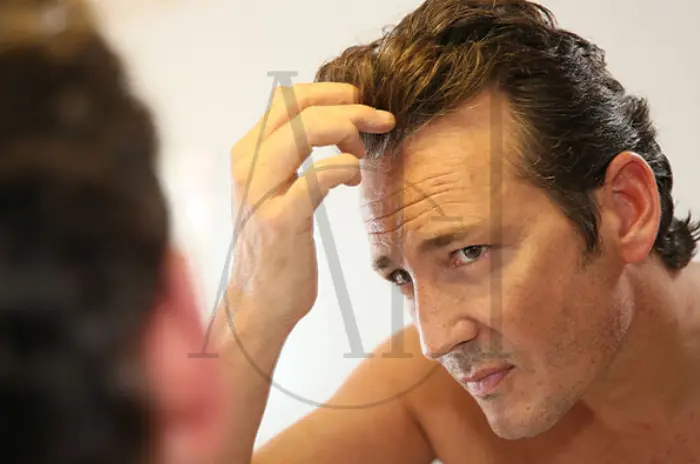A hair transplant can restore not just your hair but also your confidence. After the surgery and recovery, many people ask, “How should I style my new hair?” The good news is that you have many styling options after your hair transplant. In this blog, we will give you easy, practical, and helpful hairstyle tips after a hair transplant. We will also guide you on what to avoid and how to keep your new hair looking great.
Table of Contents
ToggleWhen Can You Start Styling Your Hair After a Hair Transplant?
Give It Time to Heal
After a hair transplant, it is very important to give your scalp time to heal. Do not use styling products or tools in the first few weeks. Most doctors recommend waiting at least 3 to 4 weeks before using any hair gel, wax, or spray.
Follow Your Doctor’s Advice
Every person is different. Your doctor will tell you the best time to start styling based on your healing and hair growth. Always follow their instructions carefully to avoid harming the new grafts.
What Hairstyles Can You Try After a Hair Transplant?
Go for Natural and Loose Styles
After a transplant, your new hair needs to grow strong. Try to keep your hairstyle simple and natural at first. Avoid tight hairstyles like ponytails or braids that pull on the hair.
Short Haircuts
Short styles such as a crew cut, fade, or taper are great options. They are easy to manage and make new growth look neat. Many men prefer these styles during the early growth phase.
Medium and Long Hairstyles
Once your hair grows longer and fuller, you can try side parts, messy waves, or layered cuts. These styles add volume and give a relaxed, natural look.
Albania Hair Clinic – Trapianto Capelli in Albania (@albaniahairclinic)’in paylaştığı bir gönderi
Tips for Styling Hair After Transplant Surgery
Be Gentle with Styling
Use a wide-tooth comb and avoid brushing too hard. The roots are still settling, especially in the first few months. Treat your hair softly to help it grow well.
Use Lightweight Products
Avoid heavy gels, waxes, and sprays. Choose light products that are free from alcohol and harsh chemicals. Look for labels that say “gentle,” “natural,” or “sulfate-free.”
Dry Hair Carefully
After washing your hair, pat it dry with a towel instead of rubbing. If you use a blow dryer, keep it on a low heat setting to avoid damaging the hair.
Hair Care Routine for Post-Transplant Styling
Wash with Mild Shampoo
Use mild or baby shampoo that does not irritate your scalp. You can switch to regular shampoo after 3–4 weeks, depending on your doctor’s advice.
Keep Your Scalp Moisturized
Dry skin can slow down healing. Use a recommended moisturizer or natural oils like coconut oil. This keeps your scalp healthy and supports hair growth.
Avoid Heat Styling Early On
It’s best to avoid flat irons, curling wands, and hot blow dryers for the first few months. High heat can damage your hair and make it weaker.
Common Mistakes to Avoid When Styling Transplanted Hair
Using Too Much Product
Heavy styling products can clog pores and stop hair from growing well. Use only a small amount of gel or wax, and wash it out regularly.
Wearing Tight Hats or Helmets
Tight hats or helmets can pull on the hair and affect blood flow to the scalp. Wear soft, loose-fitting hats if needed.
Changing Styles Too Often
Changing styles too often can stress your new hair. Let your hair grow naturally for the first 6–12 months before trying big changes.

How Long After a Hair Transplant Can You Cut or Dye Your Hair?
Haircuts After Transplant
You can usually get a haircut 3–4 weeks after the transplant. Start with scissors instead of clippers to avoid touching the scalp directly.
Hair Coloring Tips
It’s best to wait at least 6 months before dyeing your new hair. Hair dye has strong chemicals that can harm the scalp and new grafts. Always ask your doctor before coloring your hair.
Best Hairstyles to Try One Year After Hair Transplant
Full-Length Styles
After one year, your hair is fully grown. You can try modern styles like undercut, pompadour, quiff, or layered cuts.
Classic Looks
Short back and sides, side part, or textured crop are timeless and easy to manage. These styles show off your hairline and volume.
How to Add Volume to Your Transplanted Hair
Blow-Drying for Volume
Use a blow dryer with a round brush to lift your hair from the roots. This gives your hair more volume and shape. Always use a heat protectant.
Use Volumizing Shampoo
Look for shampoos labeled “volumizing” or “thickening.” These products help make your hair look fuller without using heavy styling creams.
Styling Products to Use (And Avoid) After Hair Transplant
Good Products to Use
-
Lightweight mousse
-
Aloe vera gel
-
Water-based pomade
-
Natural oils (coconut, argan, jojoba)
Products to Avoid
-
Alcohol-based gel or spray
-
Heavy wax or paste
-
Dandruff shampoos with strong chemicals (unless prescribed)
How to Maintain Your New Hair Long-Term
Healthy Diet and Hydration
Eat foods rich in vitamins A, C, D, and E, iron, and zinc. Drink enough water to keep your scalp hydrated.
Regular Trims
Getting your hair trimmed every 6 to 8 weeks helps keep your style fresh and removes split ends. It also makes styling easier.
Scalp Massage
Gentle scalp massage improves blood flow, which supports hair growth. You can use natural oils like castor or rosemary oil for this.
What to Expect Emotionally When Styling Transplanted Hair
Feel More Confident
Styling your new hair can boost your confidence and help you feel more like yourself. Many people enjoy trying new looks and feeling younger.
Patience Is Key
It takes time to adjust to your new hair. Don’t rush the process. Celebrate small progress and enjoy your hair journey step by step.
When to See a Specialist for Styling Advice
After One Year
If you’re not sure which style suits your new hair best, visit a professional stylist who has experience with post-transplant hair. They can suggest looks based on your hair type and face shape.
If You Have Hair Issues
If you notice hair breakage, uneven growth, or scalp irritation while styling, see your transplant clinic or a dermatologist. They can help you correct the issue.
-
Be patient. Styling gets easier as your hair grows.
-
Keep your scalp clean and moisturized.
-
Use soft tools and gentle products.
-
Choose hairstyles that fit your hair length and type.
-
Don’t overdo it with heat or chemicals.
Your hair transplant is an investment in your appearance and confidence. With the right care and styling, you can enjoy strong, healthy, and stylish hair for years to come. Whether you like a clean cut or a full-volume look, your new hair gives you the freedom to express yourself again.
Frequently Asked Questions
When can I start styling my hair after a transplant?
You can usually start styling your hair about 3 to 4 weeks after the transplant, but always follow your doctor’s advice.
Can I use hair gel or wax after a hair transplant?
Yes, but only after your scalp has fully healed—usually after 1 month. Use light, alcohol-free products to avoid irritation.
Can I cut or dye my transplanted hair?
You can get a haircut after 3–4 weeks, but wait at least 6 months before using hair dye, as it contains strong chemicals.
What hairstyles are best after a hair transplant?
Start with short, natural styles like a crew cut or side part. As your hair grows, you can try longer, layered looks.
How do I protect my new hair while styling?
Be gentle, avoid high heat, use mild products, and don’t pull or stress the hair. Healthy care helps the grafts grow well.




